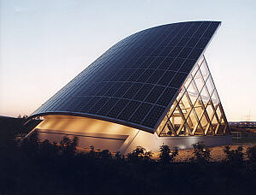|

COURSE INFORMATIONInstructor: Payman Arabshahi, Applied Physics Laboratory, Box 355640, <payman at ee.washington.edu>, (206) 221-6990. Office hours: after class (OUG 141), or by appointment.Class Mailing List: <genst162b_au13 at uw.edu> Book: David J.C. MacKay, Sustainable Energy - Without the Hot Air, Cambridge, 2009. Download PDF copy here. Prerequisite: An inquisitive mind. The course is open to freshmen pursuing studies in any field. Students interested in Engineering, Business, Biology, and Physics, will find this course particularly appropriate. Course Description: In this course we will focus on the science behind the news, and delve into the hard facts (and the hot air!) that form the basis for policies that governments are beginning to implement, and that lead to opportunities for creating a sustainable energy policy. The first half of this course discusses whether a country well endowed with wind, wave, and tidal resources such as the US, could live on its own renewables. With simple honest numbers in place, we will be able to answer questions such as (1) Can we in the US conceivably live on our own renewable energy sources? and (2) Will a switch to "advanced technologies" allow us to eliminate CO2 pollution without changing our lifestyle? The second half of this course explores six strategies for eliminating the gap between consumption and renewable production identified in the first part; then sketches several energy plans. Throughout the course we will also study, in simple terms, physical foundations of energy consumption and energy production, showing from first principles where the numbers we've used above come from. We will explain, for example, how cars can be made significantly more energy-efficient, and why planes cannot; and how the power from wind farms, tide farms, and wave farms can all be calculated on the back of an envelope.
Grading:
|